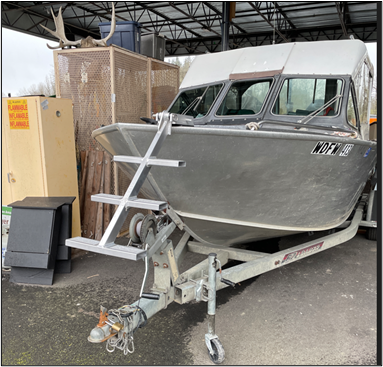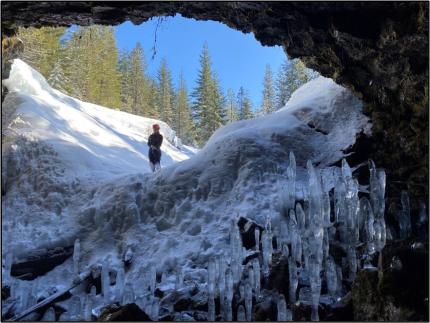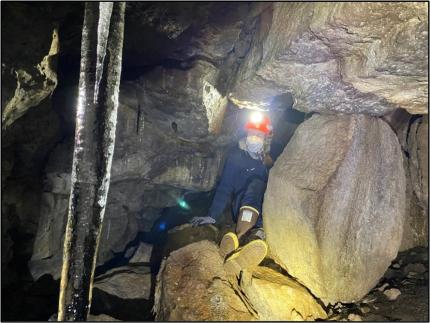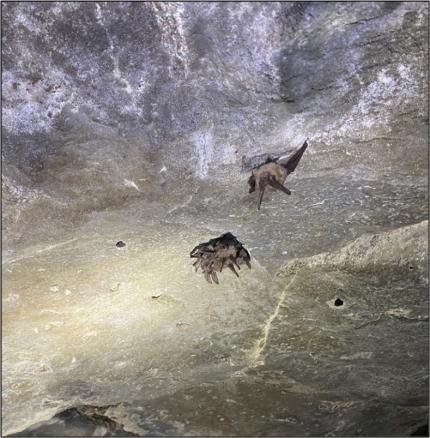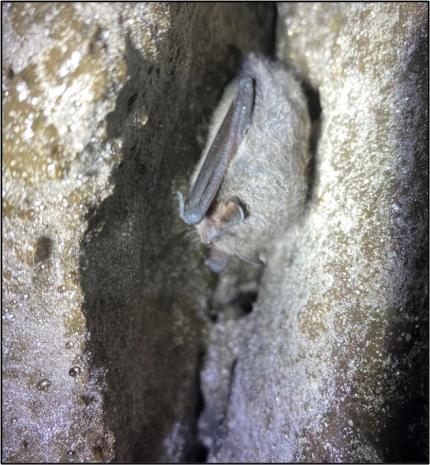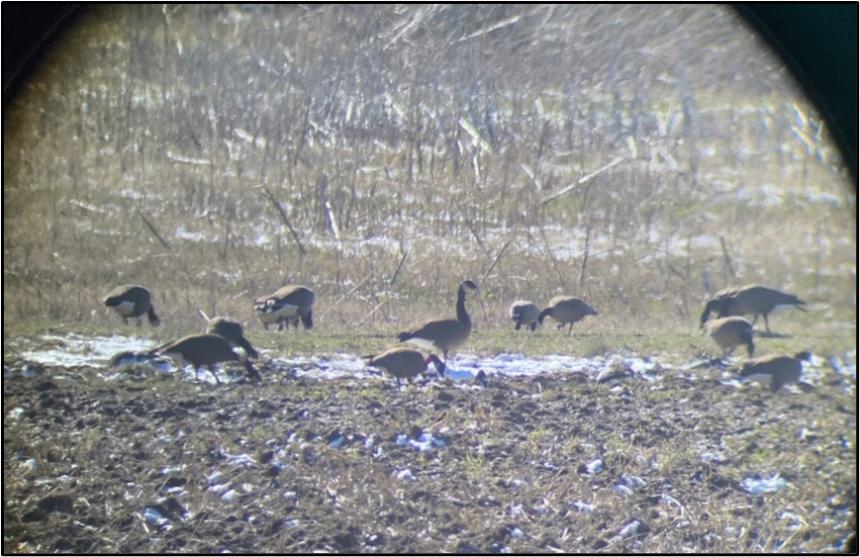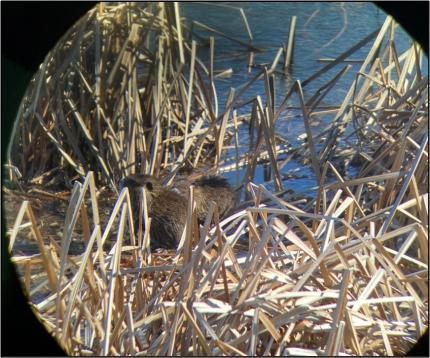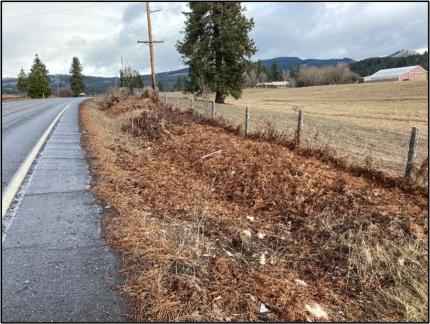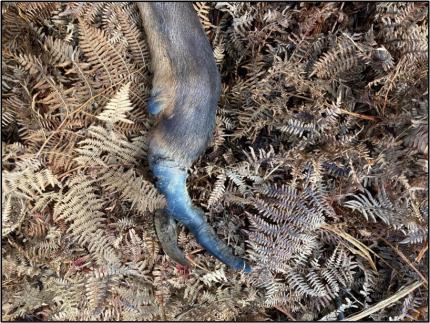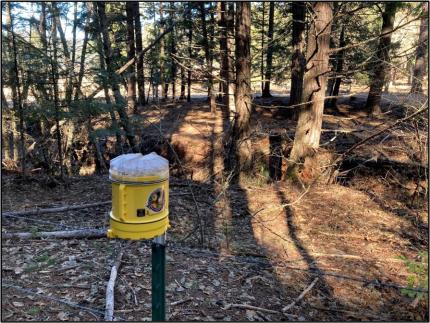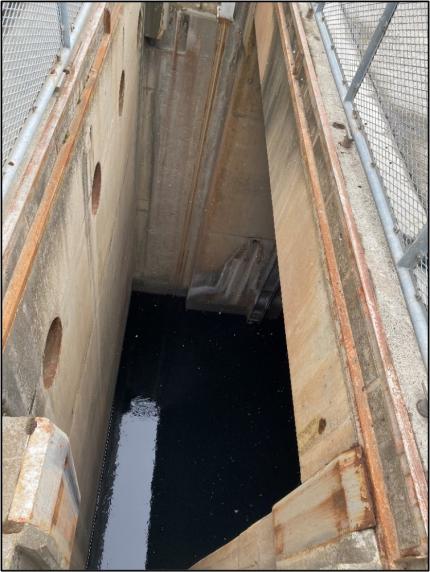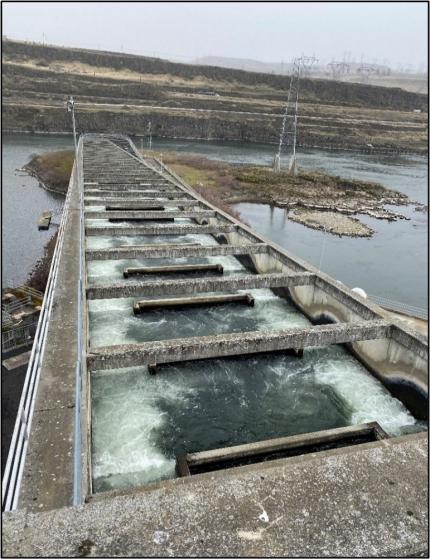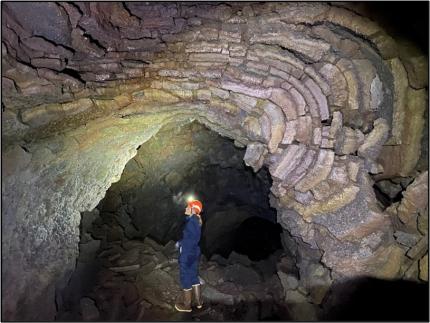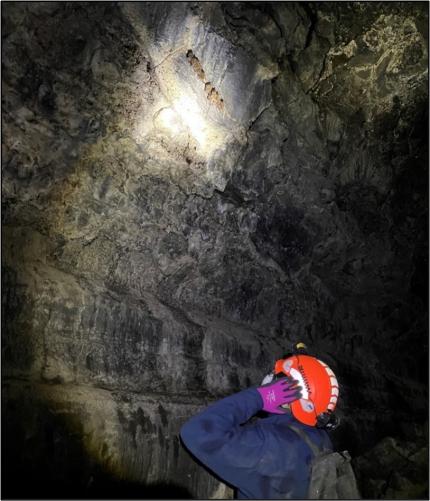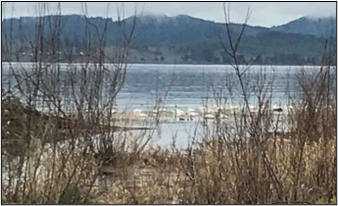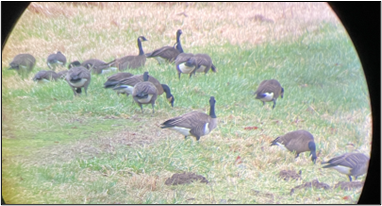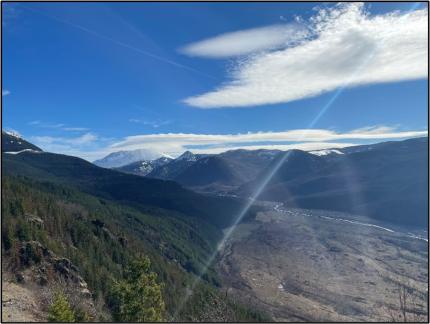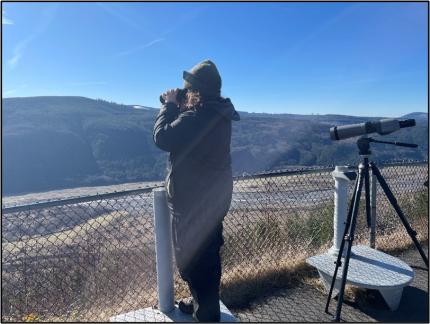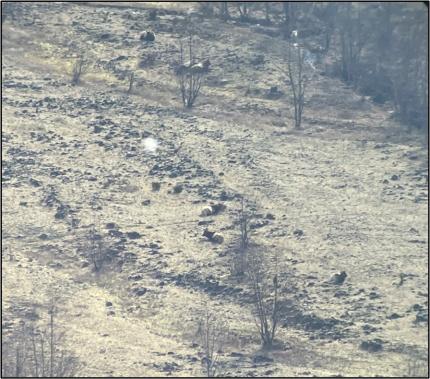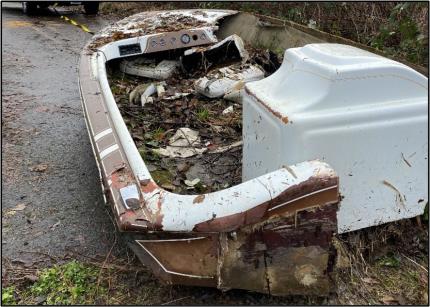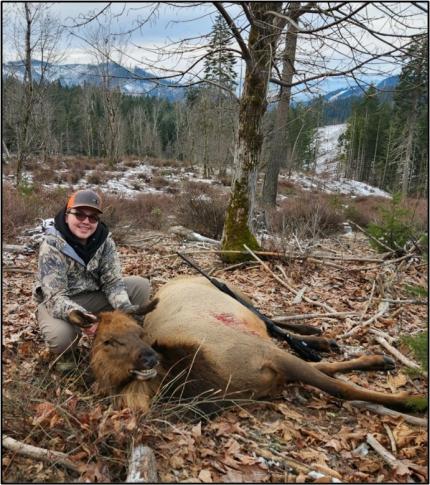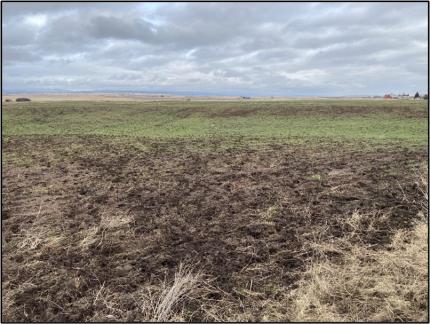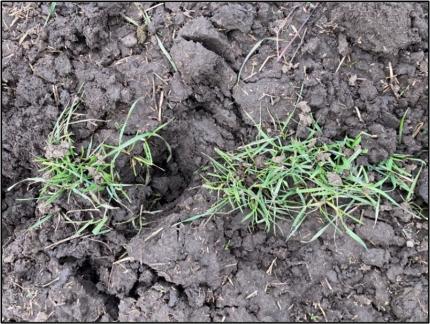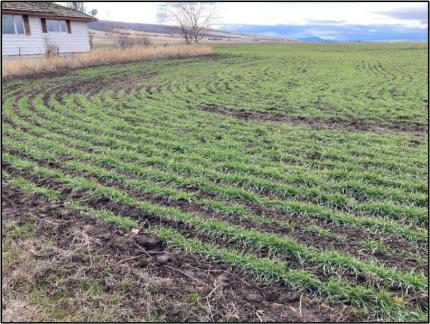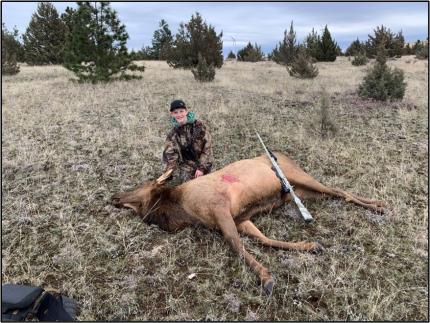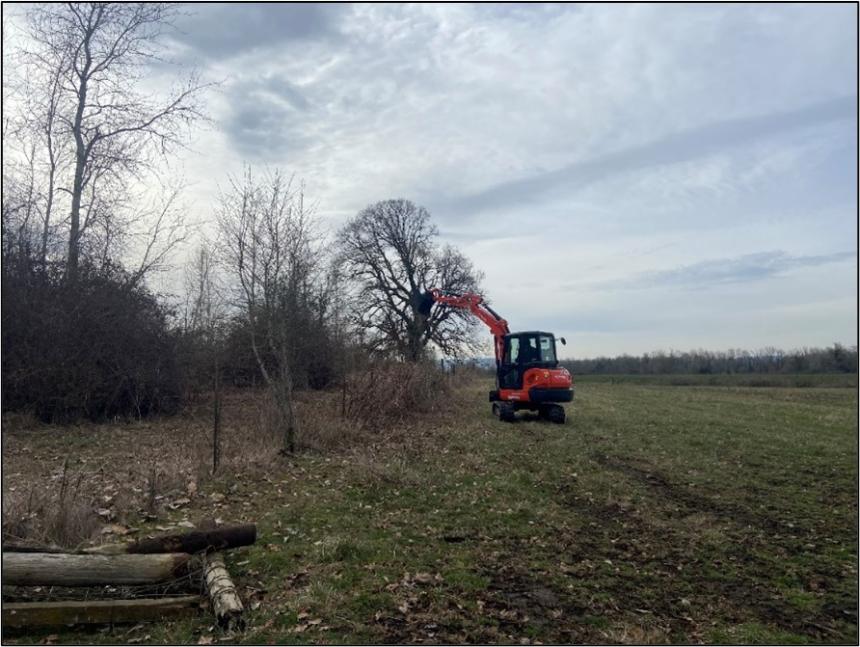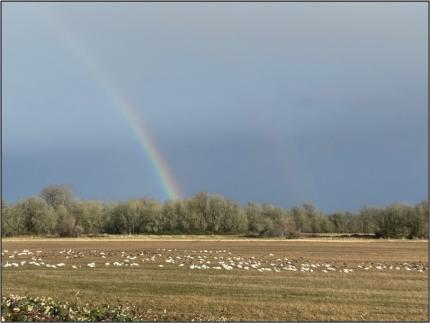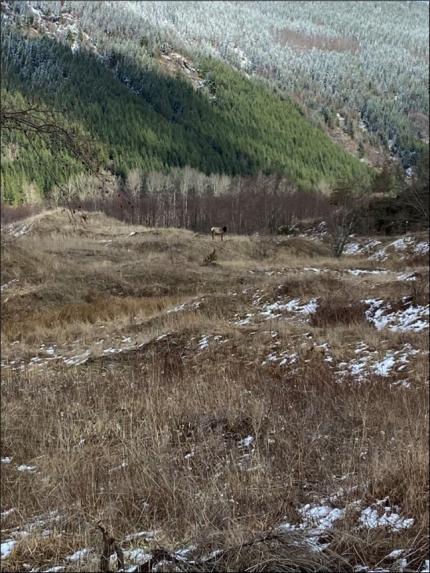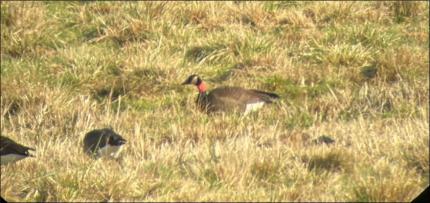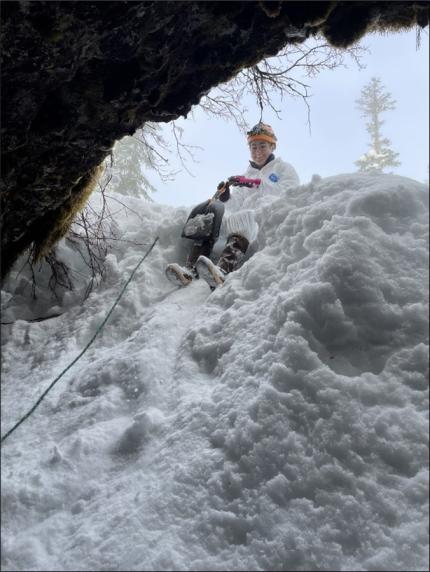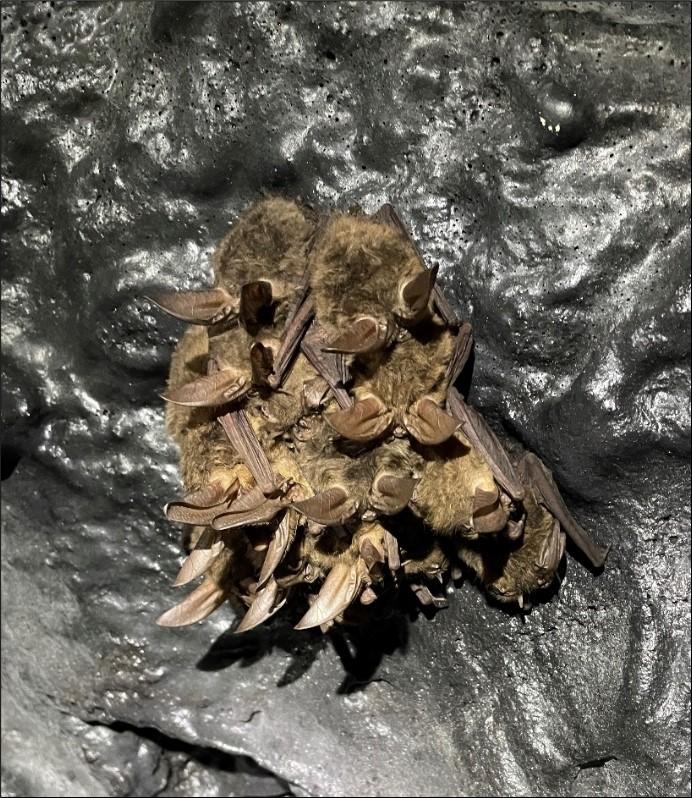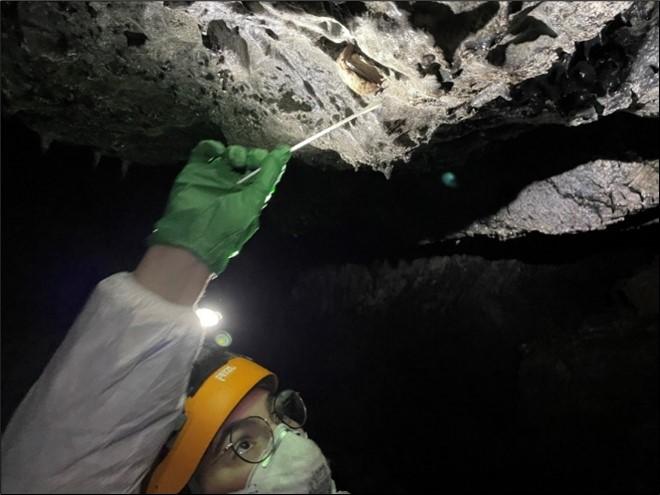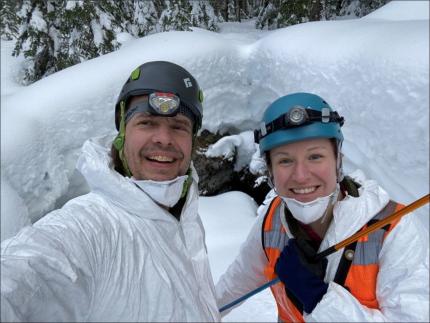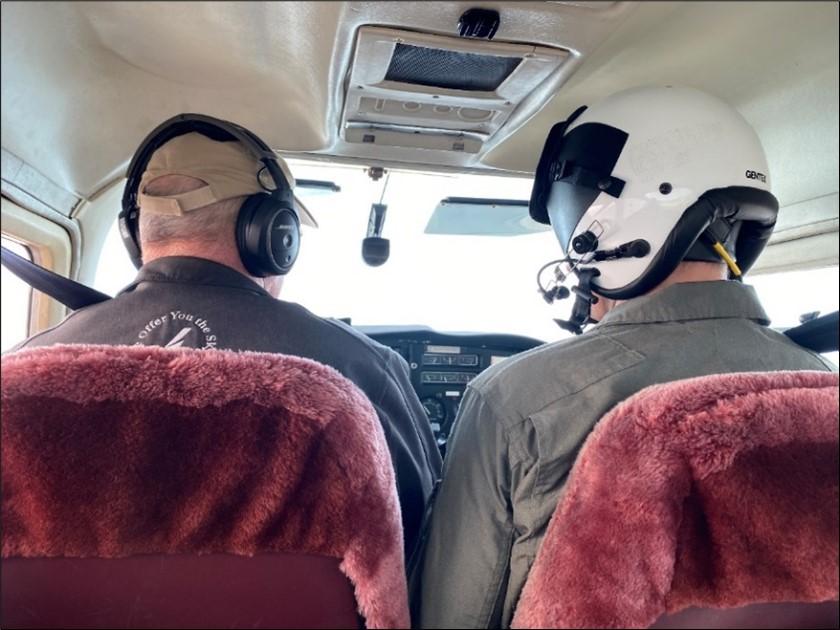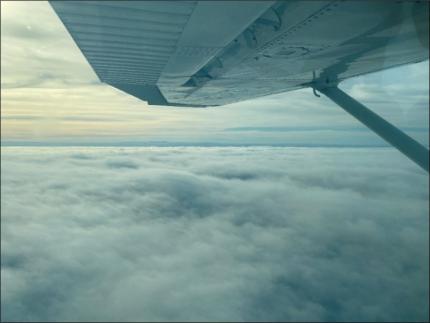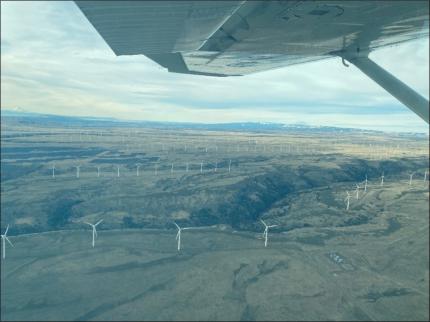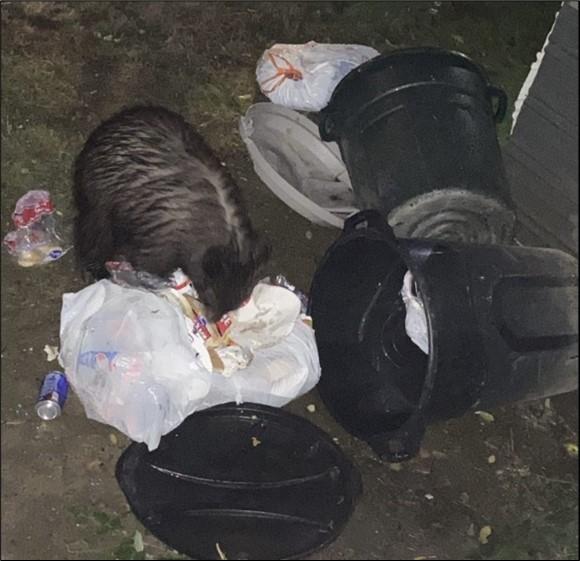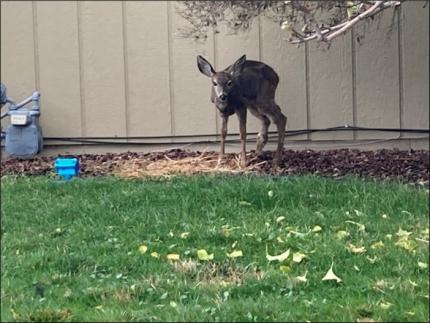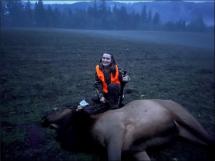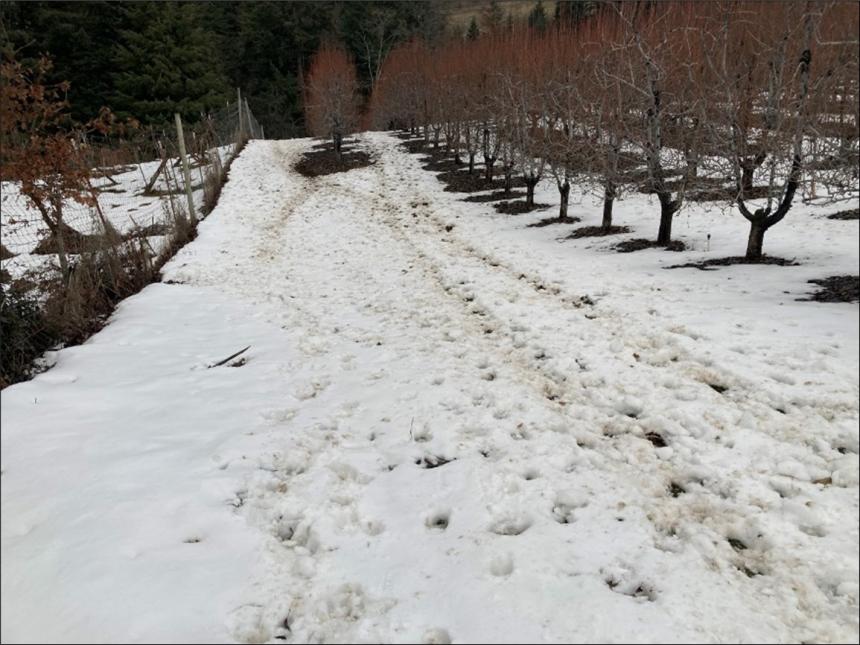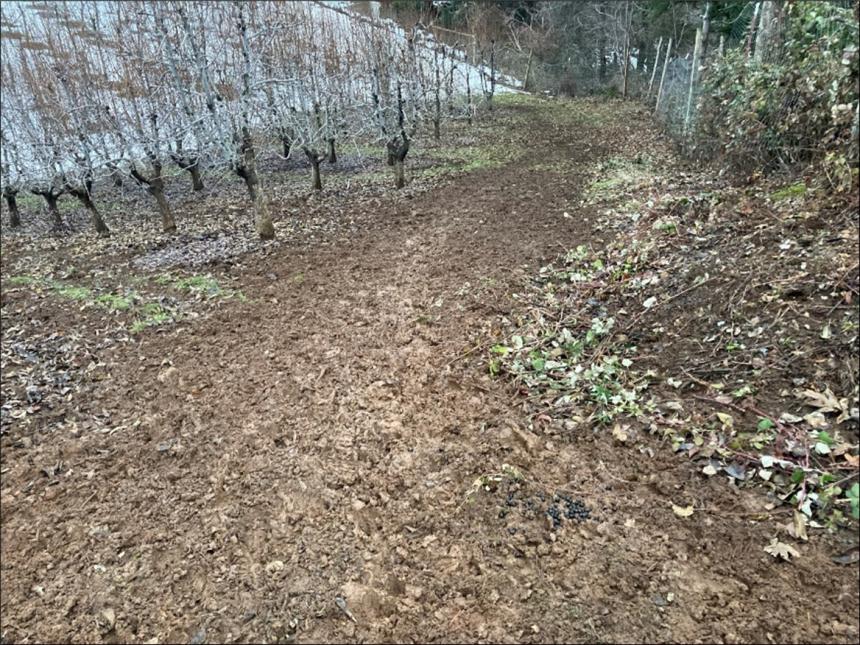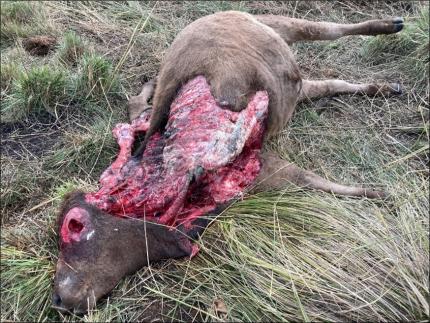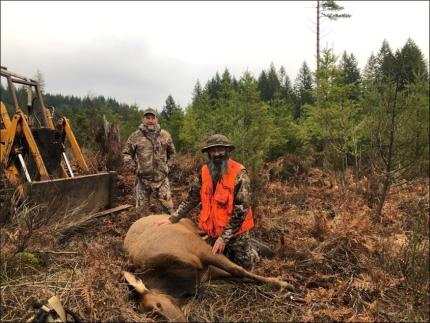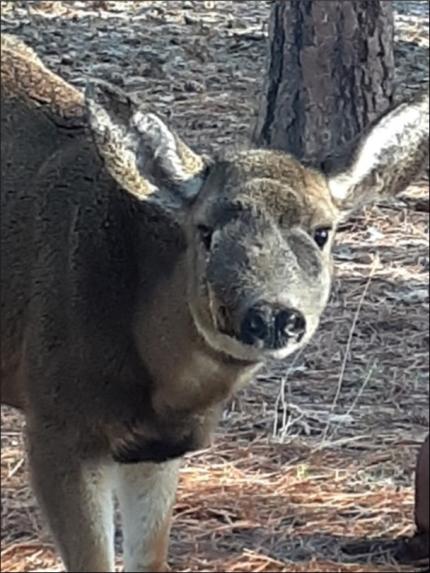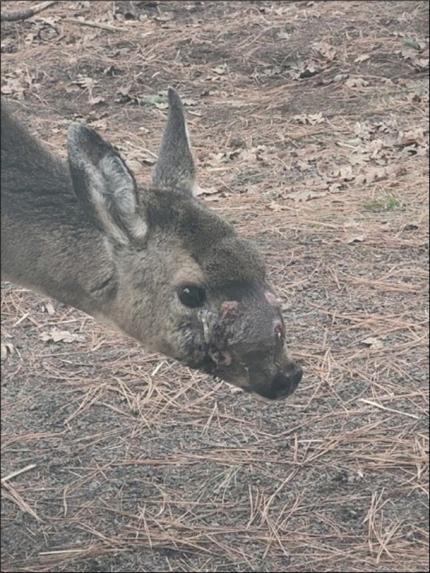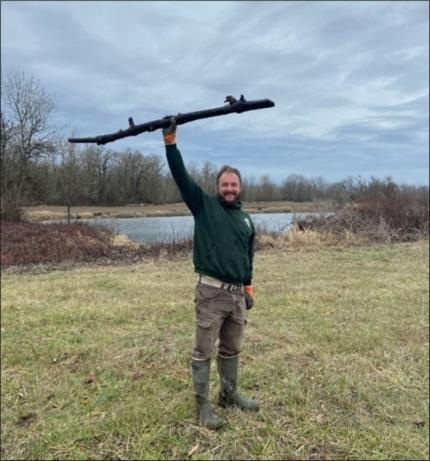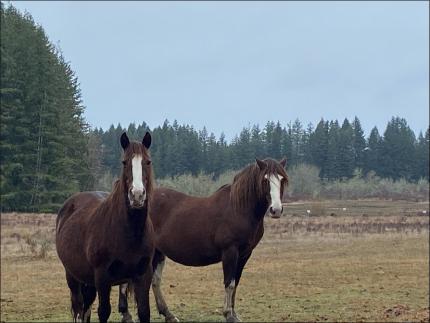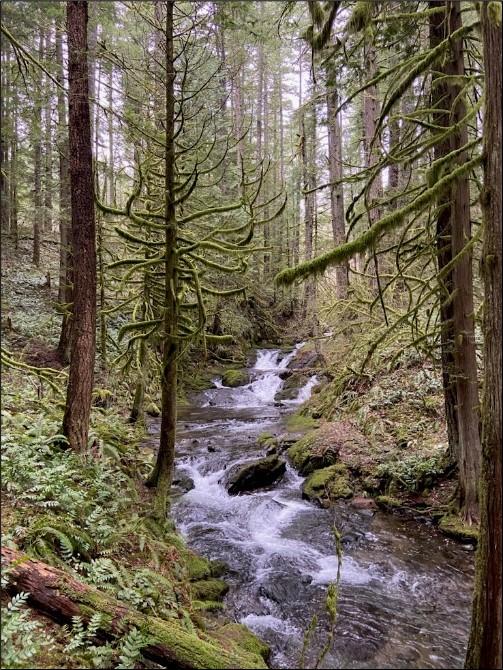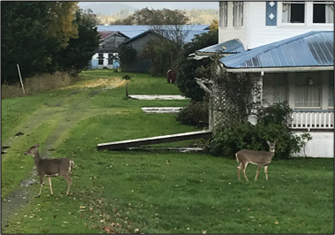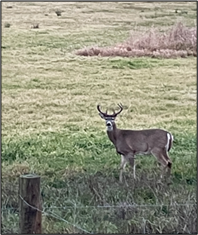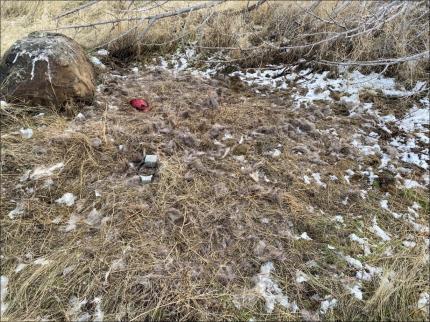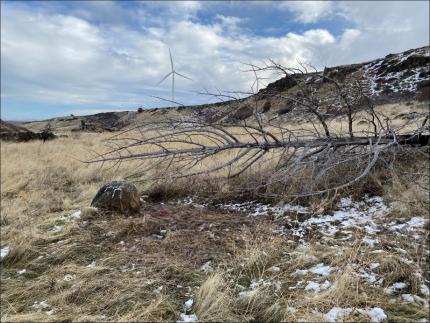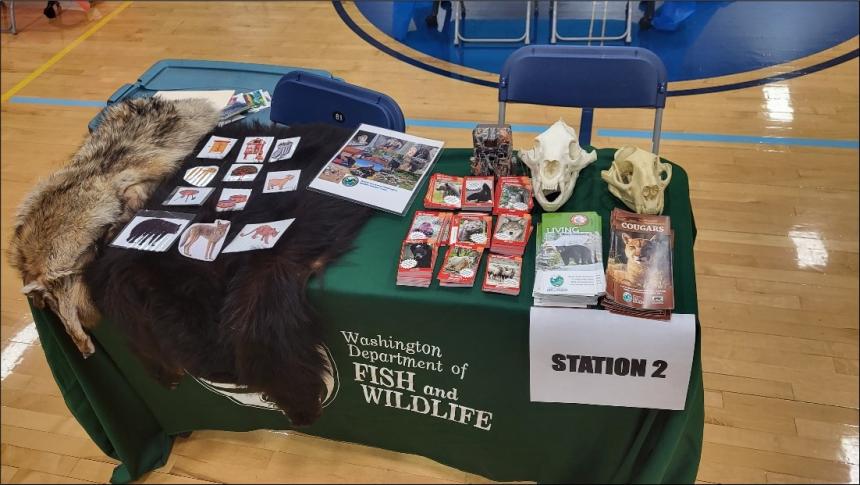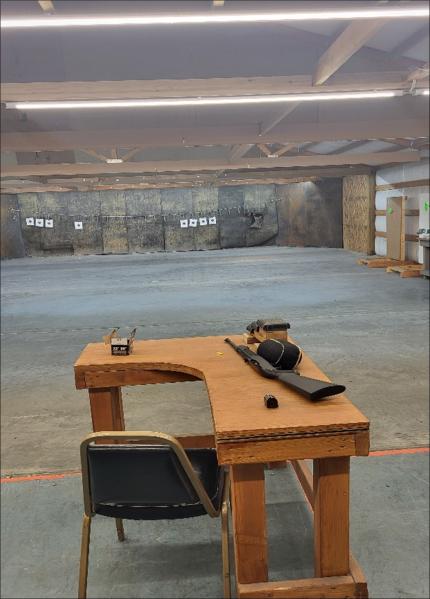Biweekly report Mar1-15 2023 - Region 5 (Southwest)
Managing Wildlife Populations
Western Washington Grouse Wing Bee: Biologist Wickhem, Biologist Holman, and Conflict Specialist Aubrey joined biologists from across western Washington and Small Game Specialist Garrison at the annual wing bee. Throughout hunting season, hunters are asked to remove the wings and tails from their harvested grouse and deposit them in collection barrels that are strategically placed throughout the state. Personnel collect these wings and tails from the barrels throughout the season. At the wing bee, staff members bring all their collected wings and tails, and the group goes through each sample to determine the species of grouse, sex, and age, and record the date and location of harvest. This data helps WDFW staff members better understand forest grouse populations across the state and allows managers to make informed decisions about future grouse hunting seasons. At this wing bee, biologists from every western district participated (staff from eastern Washington processed all their wings a few days earlier) and they tallied wings from both ruffed and sooty grouse. For more information on grouse wing collection, visit our website. Thanks to all the hunters that submitted wings during the 2022-2023 season.
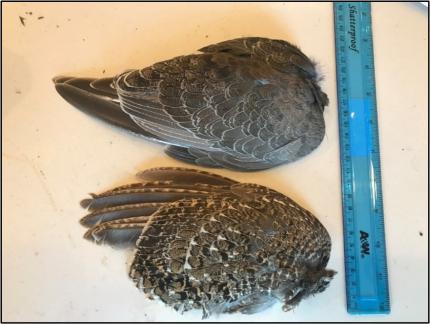
Dusky Canada Goose Surveys: Biologist Wickhem continued the District 9 bi-monthly dusky Canada goose surveys on the Shillapoo Wildlife Area and surrounding lowlands. Dusky geese are a sub-species of Canada goose that spend summers in Alaska and migrate through and overwinter on the lower Columbia River. Dusky geese are closed to recreational harvest due to low population levels. The purpose of the surveys is to count dusky geese observed and read alphanumeric codes on any red-collared duskys. Wildlife managers survey the geese multiple times across their primary wintering grounds and use the data to generate survival estimates. On this survey, Wickhem observed 162 dusky geese and read five goose collars. Other notable sightings included swans, red-tailed hawks, northern harriers, bald eagles, great blue herons, egrets, sandhill cranes, thousands of snow geese, and many species of waterfowl. A big thanks to Assistant Wildlife Area Manager Breitenstein and Photographer Angelo who located and read nine other dusky goose collars last week and reported them to Biologist Wickhem. Every collar counts.
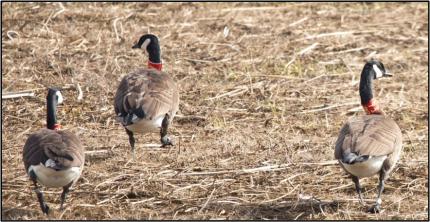
Klickitat Mule Deer Captures: Wildlife Conflict Specialist Jacobsen and Assistant Wildlife Area Manager Hunt captured and collared an adult mule deer doe via tranquilizer darting on the Klickitat Wildlife Area. After three years of capturing and collaring efforts, this was the last deer collared as part of a federally funded study on mule deer migration corridors in central and eastern Klickitat County. These GPS satellite collars will continue to collect data into next winter.
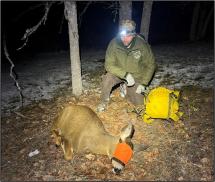
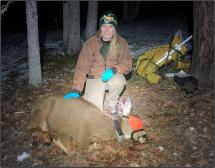
Deer Mortality: Wildlife Conflict Specialist Jacobsen and Volunteer Lieberg completed a mortality investigation on a GPS satellite-collared mule deer. The deer had been dead less than 36 hours, but the carcass had been thoroughly picked over. Based on the findings of the investigation, the mortality was attributed to coyote predation.
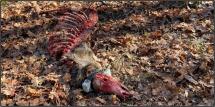
Providing Conflict Prevention and Education
Elk Damage to Hay: Wildlife Conflict Specialist Jacobsen was contacted by a landowner who was frustrated by elk damage to his new hay seeding in Klickitat County. The hay field is in ideal elk habitat, with forestland surrounding all four sides of the 100-acre hay field. Jacobsen discussed different hazing techniques with the landowner and issued permits for lethal removal. The landowner will be working with the Wounded Warrior Project to deploy public hunters on the property.
Another landowner in Clark County with elk damage to hay crops let his son fill his landowner permit to help mitigate elk damage. This was the youth hunter’s first elk harvest.

Elk Damage to Fences: A frustrated landowner contacted Wildlife Conflict Specialist Jacobsen regarding elk damage to his fences in Klickitat County. Jacobsen provided advice and schematics for elk crossings to the landowner. Jacobsen informed the landowner that he was not eligible for the lethal removal permits that the landowner was requesting.
Deer Damage to Hay: An agricultural producer in suburban Clark County contacted Wildlife Conflict Specialist Jacobsen to report deer damage to his hay crop. His new hay was starting to sprout, and the landowner had been regularly documenting over a dozen deer visiting the hay crop daily. Jacobsen enrolled the producer in a Damage Prevention Cooperative Agreement and Wildlife Conflict Technician Kolenberg provided the producer with cracker shells to help haze the deer from the property. More aggressive hazing techniques will likely be needed in the future.
Klickitat County Livestock Carcass Sanitation Pilot Program: Wildlife Conflict Specialist Jacobsen recently launched a program in western Klickitat County to assist livestock producers with carcass disposal efforts. The goal of this program is to remove livestock carcasses from the landscape near active livestock operations to help reduce scavenging, habituation, and livestock contact rate from wolves. Jacobsen and Wildlife Conflict Technician Kolenberg collected carcasses from multiple operations and disposed of the carcasses at the regional landfill.
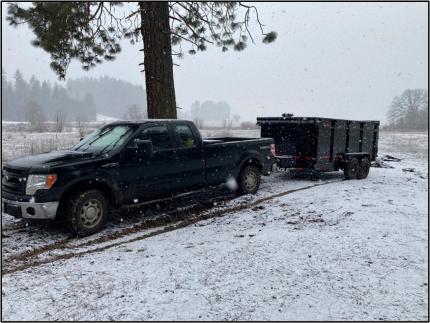
Wolf Activity Updates: Wildlife Conflict Specialist Jacobsen spoke with several different producers in Klickitat County to provide them with updates on wolf activity in the area.
Wolf Concerns: A Klickitat County resident contacted Wildlife Conflict Specialist Jacobsen regarding wolf tracks near his house. Based on wolf GPS collar data, it was likely that the tracks did belong to a wolf. Jacobsen provided advice to the landowner on keeping his dogs secured near the residence.
Cougar Concerns: Wildlife Conflict Specialist Jacobsen was contacted by a landowner in Klickitat County who was concerned that a cougar may have killed a deer near his livestock. The landowner has two yearling steers weighing 400 to 600 pounds. After examining photos of the carcass, Jacobsen was able to determine that coyotes were the likely cause of death for the deer. Jacobsen shared with the landowner that the steers were large enough that there was no risk from either coyote or cougar depredation.
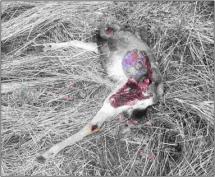
Conserving Natural Landscapes
Klickitat Wildlife Area Volunteer Project: Wildlife Area Assistant Manager Hunt led two master hunter volunteers cutting over-hanging tree limbs along the North Breaks Road, Anderson Road (including behind the gate), Old Headquarters Road (including behind the gate), and Sheep Canyon Road. The volunteers used pole saws and loppers to remove all limbs that were under ten feet high to protect the Capital Asset Management Program road crew’s equipment during road grading work. The volunteers were able to complete all the roads Hunt had in mind largely because both volunteers were hard workers and stayed on task throughout the day. Both volunteers said that they had a great time and look forward to coming out to the Klickitat Wildlife Area again to volunteer. We will have more work for them to do next Saturday.
Conducting Business Operations and Policy
Improvements to WDFW 413: Biologist Holman completed improvements to WDFW Vessel 413. The “Dusky” is a 19 foot, 1980 Alumaweld hard-top primarily used for wildlife work on the Lower Columbia River. Projects spanning waterfowl, shorebirds, Columbian white-tailed deer, marine mammals, and band-tailed pigeons have been aided by the size, range, seaworthiness, and reliability of the Dusky over her now over 40 years of service to WDFW’s mission. This year’s improvements included standard service to the 150 horsepower primary motor and the addition of a new 20 horsepower auxiliary motor, hydraulic steering system, and folding bow ladder for easer island hopping. Collectively the upgrades will make the boat safer and more efficient for its wildlife management work.
